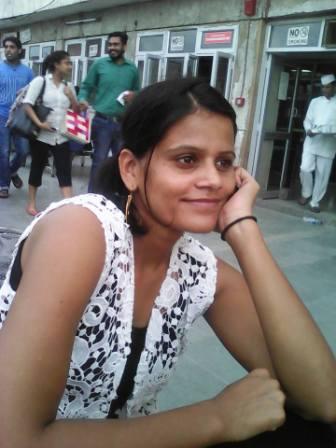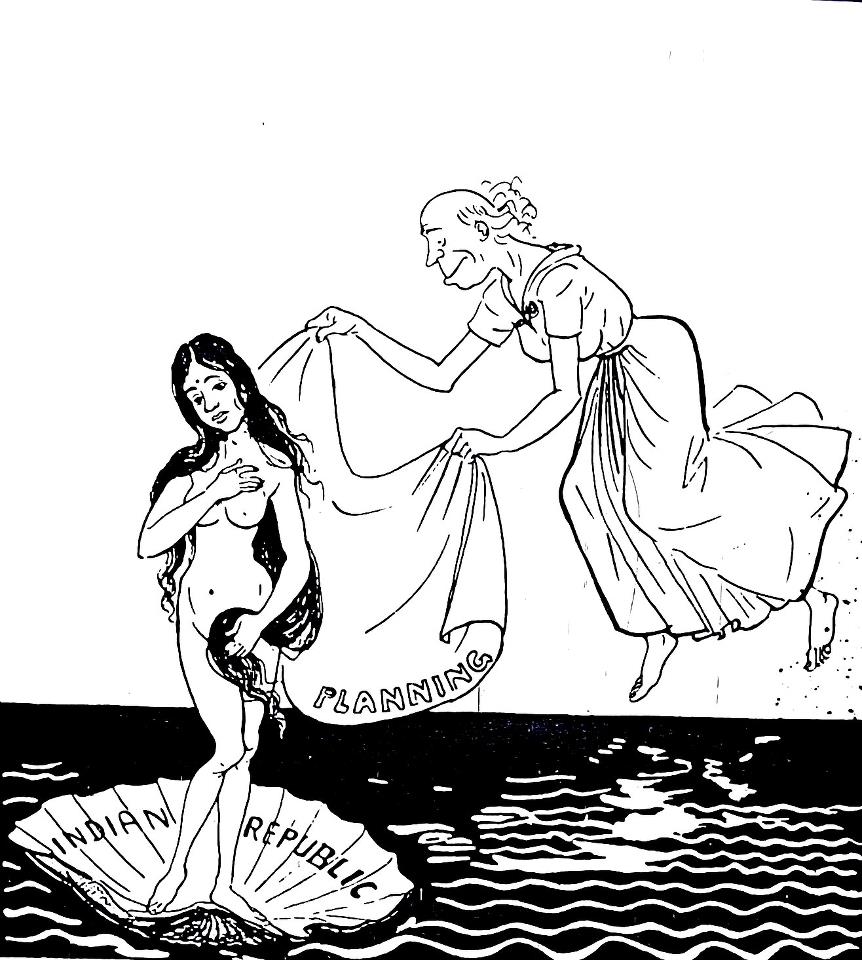Rajesh Rajamani
 Introduction
Introduction
There is a prevalent tendency among film critics and even audience to classify a movie as feminist just because it has a female actor playing the lead role. So when Rathna Kumar’s Aadai starring Amala Paul released recently, there were similar expectations. Also, since the movie was titled ‘Aadai’ (The Dress) and was expected to make a commentary on the politics and policing of clothes through an elaborate nude sequence, the expectations were quite high. However, upon release, this heightened expectation seemed to have resulted in disappointment for several critics. The common grouse was that a film which showed the promise of being feminist ended up doing the opposite.
Ashameera Aiyappan (Cinema Express) wrote: “What can be more disappointing to see a film subvert the same philosophy its form propagates?” Jeyachandra Hashmi (Nakheeran) argued that the politics of the film is problematic because unlike movies that control a woman’s boundaries through a male character, Aadai manipulatively performs the same through a rebellious female character. Subhakeerthana (The Indian Express) wrote, “Even though Aadai strives to be an unapologetic feminist film, it loses its purpose the moment (its protagonist) Kamini responds, “Naan avlo mosam illa (I am not that bad)”.
However, another section of critics didn’t particularly disapprove of the movie’s politics. But their reading of the movie too was from a certain feminist lens. Writing on the movie’s protagonist, Baradwaj Rangan (Film Companion) claimed, “First, she has to become a more sensitive person. Humanism first, feminism later”. Vishal Menon (Film Companion) argued that “‘Aadai’ is a journey of a faux feminist to understanding the true meaning of the term she has so far used merely as an accessory”.
However, it was surprising that most of these reviews had missed out a very obvious argument that the movie was making. In focussing too much on their own pre-conceived expectation and measuring the movie against it, it appears that almost all critics have refused to acknowledge the movie’s commentary on caste.
Interpreting Aadai
The movie begins with an animated narration on the historical figure Nangeli, an Ezhava woman of Travancore who cut her breasts off in protest against mulakkaram or breast tax. The key to understanding Aadai lies in how we interpret her story. While it is often told and re-told that Nangeli’s protest was a fight to protect her honour and modesty, these interpretations generally remain the effect of the Victorian moral standards that we have imbibed. In reality, Nangeli’s protest was against the oppressive structures of caste and feudalism that crushed the already burdened avarnas or untouchables. In fact, similar to the mulakkaram or breast tax levied on avarna women, the avarna men too were levied the talakkaram or head tax.
It might be very inaccurate to use the moral and modesty standards of today to interpret Nangeli’s story as one about the male gaze on a woman’s breasts or about her right to choose her own clothes. Instead, Nangeli’s story is actually about her fight against an exploitative tax system that was applicable only to the avarnas. Because these taxes were levied on Ezhavas or other avarnas, not because of their gender but caste.
Also, we tend to generally imagine clothes as a body cover whose primary purpose is to hide the shame. This stems from a certain morality standard that we have acquired and developed over time. But originally, the purpose of clothes was to protect humans from insects, animals, and extreme weather conditions. An additional layer over sensitive organs was meant to protect them adequately and not for shame related purposes.
If we interpret Aadai in this light, we can see that Rathna Kumar was trying to make a commentary on caste and the privileges/protection that come with it. Like in Nangeli’s story, ‘Aadai’ or the dress is used here as a metaphor for caste privilege.
Homogenization of women characters
Tamil cinema often homogenizes its women characters across caste-class lines and presents them as a monolithic identity. The privileges and struggles of a Brahmin-Savarna woman are depicted as equivalent and similar to that of a Bahujan woman. If ever any difference was introduced between them, it was mostly in depicting the men in a Bahujan woman’s life as violent. This was particularly true for movies made by Brahmin-Savarna filmmakers. For instance, in Magalir Mattum (1998), writer Kamal Hassan and director Singeetam Srinivasa Rao narrate the story of three women characters facing sexual harassment under a senior manager at the workplace. They work as an accountant (Brahmin), an animation artist (Savarna) and a house-keeping staff (Bahujan). While the movie negatively stereotypes the Bahujan woman’s husband, it portrays the families of the Brahmin and Savarna women as liberal and supportive. However, at work, it treats the three characters identically as if they have the same power, privilege or redressal avenues. The movie even magically allows for friendship and ally-ship between the three of them.
But such ally-ship remain fantastical and evidence from reality reveal that camaraderie between men and women from similar class-caste locations is more probable than between women across different caste-class groups. The riot like situation, that resulted out of a dispute between a family in Noida’s posh Mahagun Moderne Society and their Muslim domestic worker in the year 2017 is a classic example of this phenomenon. Every individual’s loyalty in the case remained firmly with their own caste-class group. Similarly, in the case of Dr. Payal Tadvi from Mumbai, we witnessed how women doctors belonging to upper castes repeatedly taunted and ill-treated Dr. Tadvi because of her Adivasi identity and eventually pushed her to death.
What this homogenizing process in cinema essentially does is that it makes the perspective of the Brahmin-Savarna women characters universal and forces the same on the Bahujan women characters as well. As a result, the lives and the perspectives of the Bahujan women characters are either misinterpreted or completely erased.
Savarna vs Bahujan woman
Rathna Kumar takes a break from this homogenizing trend in Tamil cinema and categorically identifies his two women characters as Savarna and Bahujan and brings their paths in confrontation with one another.
He uses mythology and history as references for his characters. When Kamini alias Suthandhira Kodi is racing on her bike against the men on the road, the movie shows an image of Goddess Durga and accompanies it with a metal version of the religious song ‘Raksha Raksha Jaganmatha’. On the other hand, Nangeli gets her name from the historical figure Nangeli of Travancore. By using Hindu mythological and Bahujan historical references, the movie puts both women characters in a position of strength but with diametrically opposite priorities. In fact, the movie portrays both the women as focussed, aggressive and ruthless characters.
The question of privilege
In depicting the Savarna and Bahujan woman characters – Kamini and Nangeli (not to be confused with the Nangeli of Travancore), the movie adequately reflects their social reality. By juxtaposing their priorities, struggles and challenges, it attempts to bring out the world of difference that privilege has on both of them.
The Savarna woman Kamini is portrayed as a rebellious individual who lives by her own rules. She works as a team lead in a major media organisation. While Kamini has to negotiate or rebel against patriarchal demands at work, home or other spaces, she still lives in a relatively privileged environment. However, because of her rebellious nature, Kamini obsessively looks for challenges even in situations where there are absolutely none. “Bet katriya?” (Shall we bet on it?), she quips often.
On the other hand, for the Bahujan woman Nangeli, survival itself is an everyday challenge. When her attempt at the UPSC exam is scuttled because of Kamini’s recklessness, she is literally set back by a year. She can only attempt the exam after another year and to economically sustain herself until then, she works as a food delivery agent. The reference to NEET and how it killed Anitha is used to tie together the story of present-day Nangeli with the historical figure Nangeli, indicating how the fight against the structure of caste is a matter of life and death for Bahujan women.
It is useful to remember here that media organisations in our country are primarily dominated by Brahmin-Savarna men and women. Bahujan men and women are either completely absent or at best only present in negligible numbers in media organisations. On the other hand, because of the reservation policy, Civil services, Government and PSU jobs continue to remain the most lucrative job options available for educated Bahujans.
The movie understands the social difference of being a Savarna or a Bahujan woman and locates the characters with a certain sociological accuracy.
The confrontation and the problem with it
The confrontation between the two women occurs when Nangeli falls prey to Kamini’s prank show. Kamini’s need to prolong the prank show episode for TRP reasons puts Nangeli’s attempt at the UPSC exam in jeopardy. To retaliate, Nangeli finds an opportune moment to strand a naked Kamini in an empty building, a task that Kamini herself was willing to bet on earlier. What Nangeli essentially does here is metaphorically strip Kamini of her caste privileges and lets her fend for herself in an environment devoid of any support system. This forced situation devoid of any privilege or support system is supposed to reflect a Bahujan woman’s reality.

Rathna Kumar might be attempting to use nudity or nakedness as a metaphor for the absence of privilege, but still, it does turn out to be a very bizarre and disturbing metaphor. While he independently locates the Savarna and Bahujan woman characters with a certain accuracy, Rathna Kumar doesn’t seem to fully grasp the power relations between them. In the epic Mahabharata, Dushasana was able to disrobe Draupadi because as a man belonging to a caste location similar to hers, he was able to wield more power than her. However, to assume that a Bahujan woman has similar power to strip a Savarna woman of her clothes or even the metaphorical privileges appear more like a male fantasy than anything else. The extended nude sequences in Aadai are stretched to an unbearable level and the movie tries too hard after a point. The fact that the nude sequences are shot well without any voyeuristic gaze might be laudable but it doesn’t add anything to the narrative. Instead of indulging in this strange metaphor, Rathna Kumar could have taken on a situation that is closer to real-life to stage the confrontation between a Savarna and Bahujan woman.
Also, the movie never invests enough time to narrate Nangeli’s story. Her backstory, struggles, and priorities are narrated too quickly. And they fail to resonate effectively with the audience. For a movie that tries to contradict the Savarna woman by bringing a Bahujan woman into the equation, Aadai fails in not allotting enough time and space for the Bahujan character. Instead, her story is compressed and rattled out like a mutual fund investment disclaimer.
Because of this, when the movie concludes itself, everything feels gimmicky and pointless. In fact, it seemed like Rathna Kumar was using the Bahujan woman as a mere proxy to offer his criticism of the Savarna woman. Instead, had the movie invested itself in the Bahujan woman Nangeli, we could have better understood the point it was trying to make.
Flawed resolution
One argument that was made against Aadai is that it pits one woman against another. This can’t exactly be a bad thing. Because in reality, Brahmin-Savarna women do continue to uphold the caste structure simply because it works in their favour. On the other hand, a Bahujan woman has to wrestle against the caste structure for her survival. So, a conflict between these two women is certainly rooted in real life.
While Rathna Kumar attempts to make an argument on the power relations between a Savarna and Bahujan woman, he mostly fails at it. In trying to find a resolution to the conflict between them, he forces an end that sounds like a moral science lesson to the Savarna woman. Even the momentary peace that the two women sort of arrive at seemed very forced and artificial. All the arguments and nuances that the movie was trying to build come crashing down after a point. It is a mystery why Rathna Kumar gave up on the narrative that he started with.
Had the movie stayed firm in its commentary on caste and its privileges, Aadai could have become a very important movie in Tamil cinema’s history. But then, that didn’t happen. We are only left with a feeling that had the movie been made by a Bahujan woman, it could have easily risen beyond the flaws that Aadai suffered from and taken the Savarna – Bahujan woman confrontation to a much credible conclusion.
Rajesh Rajamani wonders if readers believe everything that an ‘author’s bio’ claims. He also writes a web-comic series called ‘Inedible India’. He is currently based out of Chennai.










